It’s time to update the definition of “smart growth”
It has been a dozen years or so, fifteen at the most, since a broad but committed group of advocates and organizations coalesced around a shared set of beliefs that, borrowing from then-Maryland-governor Parris Glendening’s landmark legislation, we called “smart growth.” The phrase suited the movement because it emphasized that we were not opposed to population and economic growth, but we felt it was important to accommodate it in a smarter way: one that reduces the environmental, economic and social costs of unchecked suburban sprawl and brings investment and opportunity back to communities that had been left behind in the building boom on the fringe of our cities and metro areas.
I’m still for that and, if you’re reading this, chances are that you are, too. But what about the particulars? Have we learned anything in the last decade and a half, and are we sufficiently applying what we have learned? I would say yes, and no, respectively. I’ll get to that in a minute but, first, let’s look at where we’ve been.
Of all the attempts to define what the content of smart growth should be, the one that has had the most publicity and staying power has been the set of ten principles crafted in the late 1990s for the Smart Growth Network (NRDC is a co-founder). They are expressed as imperatives, the things we should strive for in pursuit of a smart growth agenda:
- Create a range of housing opportunities and choices
- Create walkable neighborhoods
- Encourage community and stakeholder collaboration
- Foster distinctive, attractive communities with a strong sense of place
- Make development decisions predictable, fair and cost effective
- Mix land uses
- Preserve open space, farmland, natural beauty and critical environmental areas
- Provide a variety of transportation choices
- Strengthen and direct development towards existing communities
- Take advantage of compact building design
I’m for those, too. (Well, nine of the ten, anyway. I’ve never thought “compact building design” should be at the forefront of our agenda, and in fact it never has been – we seldom advocate for smaller buildings. That one was simply a mistake; the framers of the list were so scared of using the word “density” that we substituted “compact,” but what we meant was “let’s build more compact neighborhoods and communities,” not “let’s use small buildings.” The mistake has never been corrected.)
Notice anything missing in those principles? I do. There’s nothing explicit about equity, health, food, water, access to jobs, parks, energy, green technology, and more – many of the things that have come to the forefront of community and environmental interests in 2010 were simply not on our minds in the 1990s or, if they were, not to nearly the same degree. If we want to stay relevant, and honest and true to the issues that confront us and the people we represent, we need to do some updating.
These are the things that I think have received the most emphasis in smart growth coalition advocacy: transportation, particularly in support of public transit and transit-accessible development; infill development; increasing neighborhood density; regional planning; and, for many, affordable housing. There have also been specialized issues in particular states, such as defending planning against property rights assaults in parts of the west, along with boutique national issues such as the National Vacant Properties Campaign. Local groups also continue to fight proposed highway expansion that they believe would exacerbate sprawl.
That’s not a bad decade’s worth of work, of course, and in fact, we have accomplished much: since the mid-1990s driving rates have begun to go down; transit use and walking have gone up; central cities are growing again; sprawl has slowed dramatically in many places; 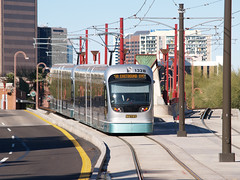
I’m not saying that our work is done, but today we confront a very different set of trends than we did in the 1990s. In fact, I would say that we have made so much progress on these things – with market forces on our side, now, too – that we who like to think of ourselves as “progressive” risk being anything but, if we don’t turn some attention to the issues that have emerged in the 21st century.
Here are some items on which I would like to see more emphasis in an updated, 21st-century smart growth agenda. Some organizations and advocates are working on some of them now, but not we are not often addressing them as a national movement and they are not sufficiently addressed in our core foundation statements:
- Equity. We should be unequivocal that we stand for communities of fairness and opportunity; this includes but is not limited to the issue of affordable housing. Gentrification fears - not always justified, but sometimes - are real, and detrimental to our cause. How can an agenda be “smart” if it is not also inclusive?
- Water. I think we’re slowly making progress in bringing things like green stormwater infrastructure into the smart growth mix, but we have a long way to go. This wasn’t really seen as a smart growth issue when Smart Growth America and the Smart Growth Network were created, but it needs to be - again, partly because it ca
n defeat us in places if we don’t embrace it. Besides, in my opinion contributing to the restoration of urban watersheds is the right thing for urban development to do. Should sprawl have to do more for water quality, because it does more harm to the watershed? Absolutely. But city projects need to do their part. There is also the issue of water supply in arid regions.
- Green buildings and technology. Green isn’t green unless it is smart, and smart isn’t smart unless it’s green. I know the green building crowd doesn’t fully accept this, labeling buildings “green” or even “net zero” in the middle of nowhere. But that doesn’t change what is right. If a project built in 2010 doesn’t have green buildings and green infrastructure, it is not worthy of our applause. It’s just not that hard anymore. Beyond the buildings: what about neighborhood infrastructure such as on-site renewable energy generation, or district heating and cooling systems?
- Health. This is another issue that wasn’t seen as “smart growth” back in the day, but now seems a glaring omission. This means placing walkability at or near the top of our design agenda (to their credit, the ten principles do feature walkability), but it also means taking stock in a more deliberate and robust way to be sure that our agenda contributes to health, including mental health.
- Planning for people. My friend David Crossley of the respected regional advocacy organization Houston Tomorrow believes that we have almost forgotten the human side, why we advocate, in our platform. If we’re not improving people’s lives, then what, exactly, is the point? This is related to equity, and also to health and walkability; but it doesn’t stop there.
- The quality of smart growth. There’s a lot of mediocre “smart growth” out there, and we should not support it. We should be past the point where we applaud density or transit for its own sake. In particular, high-rises witho
ut parks and amenities, without moderation, without respect for community, are in my opinion not only creating a lousy legacy in the long run but also hurting our cause today, because they are the easily caricatured public face of smart growth. Why should we mindlessly support them simply because they are dense and near transit? Fifteen years ago, merely getting any smart growth was a big deal. But, now, smart growth is mainstream. It’s time to insist on quality.
Consider the differences between our ten principles, written a dozen years ago, and Mark Holland’s more recently conceived “eight pillars of a sustainable community”:
- A complete community
- An environmentally friendly and community-oriented transportation system
- Green buildings
- Multi-tasked open space
- Green infrastructure
- A healthy food system
- Community facilities and programs
- Economic development
That’s a more up-to-date list that includes some items missing from the ten principles, though I also think the ten principles cover some important ground that the eight pillars do not (for example, collaboration, predictability of development decisions, existing communities, preserving rural and natural land). In addition, I’m not entirely sure that “smart growth” and “sustainable community” are the same thing. But should they be? Is smart growth really smart if it doesn’t include green space, incorporate access to healthy food and facilitate economic development for distressed communities?
I’ve written about some of these things before, for example imploring us to understand what I like to call the environmental paradox of smart growth: to reduce environmental burdens on the planet as a whole, or even on a larger community, we actually may need to increase them in some places. That brings extra responsibility, in my opinion, to acknowledge and soften those impacts. I also have challenged the smart growth community to be more ambitious and demanding.
I was hoping to generate a buzz with those posts and, to be honest, I don’t think I succeeded. None of the conversation changed in our community, at least not yet, though some of us are working on it.
I’m going to keep at it. The world has evolved, and what was good enough a dozen years ago just isn’t good enough anymore. What we know how to do today is so much better and more exciting that what we knew how to do when we started. I intend to advocate a more ambitious and holistic agenda for communities and for development, whether we call it “smart growth” or not. And I hope some of you will join me.
Move your cursor over the images for credit information.
Kaid Benfield writes (almost) daily about community, development, and the environment. For more posts, see his blog’s home page.

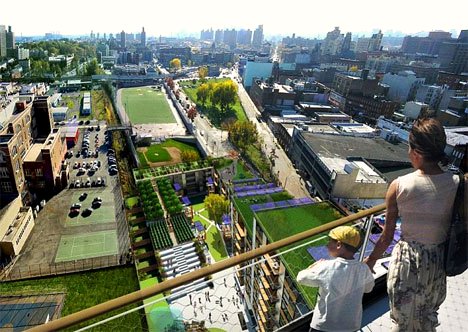
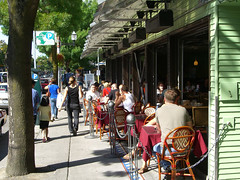
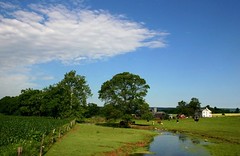
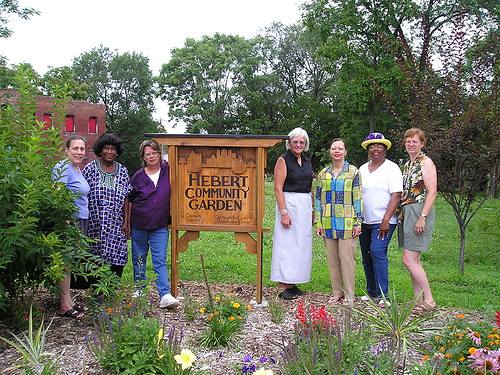
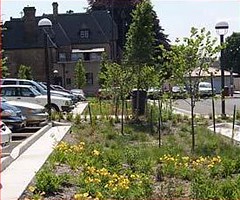 n defeat us in places if we don’t embrace it. Besides, in my opinion contributing to the restoration of urban watersheds is the right thing for urban development to do. Should sprawl have to do more for water quality, because it does more harm to the watershed? Absolutely. But city projects need to do their part. There is also the issue of water supply in arid regions.
n defeat us in places if we don’t embrace it. Besides, in my opinion contributing to the restoration of urban watersheds is the right thing for urban development to do. Should sprawl have to do more for water quality, because it does more harm to the watershed? Absolutely. But city projects need to do their part. There is also the issue of water supply in arid regions.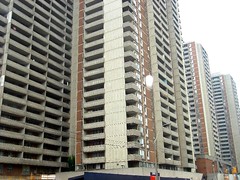 ut parks and amenities, without moderation, without respect for community, are in my opinion not only creating a lousy legacy in the long run but also hurting our cause today, because they are the easily caricatured public face of smart growth. Why should we mindlessly support them simply because they are dense and near transit? Fifteen years ago, merely getting any smart growth was a big deal. But, now, smart growth is mainstream. It’s time to insist on quality.
ut parks and amenities, without moderation, without respect for community, are in my opinion not only creating a lousy legacy in the long run but also hurting our cause today, because they are the easily caricatured public face of smart growth. Why should we mindlessly support them simply because they are dense and near transit? Fifteen years ago, merely getting any smart growth was a big deal. But, now, smart growth is mainstream. It’s time to insist on quality.